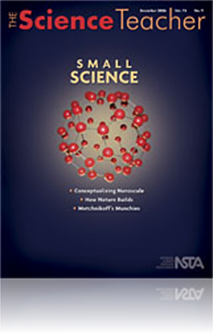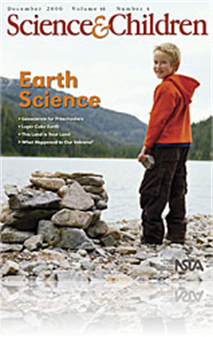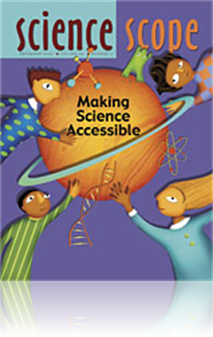All Resources
Journal Article
The Structures and Properties of Carbon
The four main forms of carbon—diamond, graphite, buckyballs, and CNTs—are an excellent vehicle for teaching fundamental principles of chemical bonding, material structure, and properties. Carbon atoms form a variety of structures that are intrins...
Journal Article
One third grade teacher reflects on her students living by the ocean and their frequent jaunts to the beaches where expansive slabs of granite jut out into the sea. During the summer, they run along the rocks and explore the cracks and crevices. Thro...
Journal Article
Science 101: Is it possible to turn coal into diamonds?
How cool would it be to be Lois Lane? Anytime she wants a diamond, she just has Superman use his super strength to squeeze a lump of coal. But is this really possible? Using a high enough temperature and enough pressure, can you turn coal into diamon...
Journal Article
Science Sampler: Rocket boys and girls
Teachers at a middle school located in West Virginia didn’t want their students to limit themselves to local jobs when faced with future career decisions. They wanted them to investigate a world of science within their state that they might not be ...
Journal Article
Soil is all around us, in fact there is so much of it that we often don’t think of it as a valuable natural resource, and we might even take it for granted! We rely on its productivity for our food and fiber and its firmness to support our building...
Journal Article
Commentary: Putting Nanotechnology Under the Microscope
Nanotechnology is all over the news: Particles that become translucent or change color according to size! Particles smaller than viruses in the shape of hollow soccer balls! Particles that can destroy tumors, prevent sunburn, and keep your windows cl...
Journal Article
Self-Assembly: How Nature Builds
Self-assembly or spontaneous assembly is a process in which materials build themselves without assistance (Goodsell 2000). Presented here is a simple in-class exercise that underlines the basic principles of self-assembly and helps students understan...
Journal Article
Making <em> Learning </em> a Never-Ending Story
Initially, middle school students and their parents displayed mixed emotions when shown 10-meter-long science murals at the beginning of the school year. However, once they discovered that story concepts illustrate and address the normally overwhelm...
Journal Article
Intrigued by the idea of offering creative ways to reinforce both fine-motor skills and early mathematics skills as well as being eager to work with young students, a group of five preservice teachers and their professor arranged to try a few activit...
Journal Article
Editor's Note: Geology Is Fundamental (December 2006)
Geology is fundamental. The usual triad of sciences (chemistry, physics, and biology) is also clearly important. Not much can be explained without physics, for example. But geology, the history of Earth, is an application of these sciences that deser...





